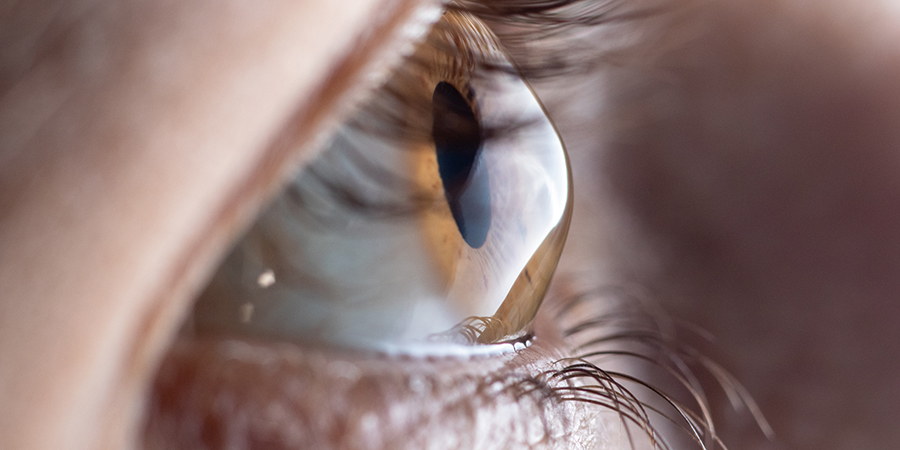Keratoconus is an eye disorder in which the cornea, which is the transparent, dome-shaped front of the eye, gradually thins and bulges outward into a cone shape.
Vision becomes hazy, and there is a possibility of increased sensitivity to bright light and glare when the cornea is formed like a cone. In most cases, keratoconus affects both of a person’s eyes. Nevertheless, it can impair one eye more than the other. In most cases, the onset of symptoms occurs between the late teens and those over 30. After that, the disease might not worsen for at least ten years.
In the early stages of keratoconus, your vision issues may be able to be corrected with eyeglasses or soft contact lenses. After some time has passed, you may need to have rigid gas-permeable contact lenses or other types of lenses, such as scleral lenses, inserted into your eyes. If your health continues to deteriorate, a cornea transplant may be necessary.
A corneal collagen cross-linking treatment can help slow down or stop the progression of keratoconus, which might eliminate the need for a cornea transplant in the future. In addition to the vision correction treatments described before, this therapy may also be made available.
Symptoms
As the condition advances, keratoconus patients may see a shift in their symptoms. They are as follows:
- Vision that is hazy or otherwise distorted.
- Heightened sensitivity to bright light and glare, both of which can make night driving more difficult.
- A requirement for frequent adjustments to one’s prescription for eyeglasses.
- Vision that suddenly becomes cloudier or worsens.
When to See a Doctor
Make an appointment with an ophthalmologist if you notice a sudden decline in your vision. This condition, known as astigmatism, is characterised by an abnormal eye curvature. During normal eye exams, your eye doctor may also search for evidence of keratoconus in your eyes.
Causes
Although the exact aetiology of keratoconus is unknown, both hereditary and environmental factors are considered to have a role in its development. In addition, keratoconus runs in families; approximately one in ten persons with the disorder have a parent who also has the ailment.
Risk Factors
Keratoconus is more likely to develop if you have more than one of the following:
- Having a history of keratoconus in one’s own family.
- You’re rubbing your eyes with all of your might.
- Having a preexisting medical condition, such as retinitis pigmentosa, Down syndrome, Ehlers-Danlos syndrome, Marfan syndrome, hay fever, or asthma.
Complications
In certain circumstances, your cornea may enlarge rapidly, resulting in an abrupt decrease in eyesight and scarring of the cornea. This is due to a disorder known as Descemet’s membrane, which is characterised by a breakdown of the inner lining of the cornea (your eye’s clear front layer). This results in the condition known as hydrops, which is the fluid entry into the cornea. In most cases, the swelling will go down on its own, but you may end up with a scar that impairs your eyesight.
Your cornea may scar if you have advanced keratoconus, particularly where the cone is the most noticeable. In addition, vision issues can get progressively worse with a damaged cornea, which may necessitate surgical cornea replacement.




